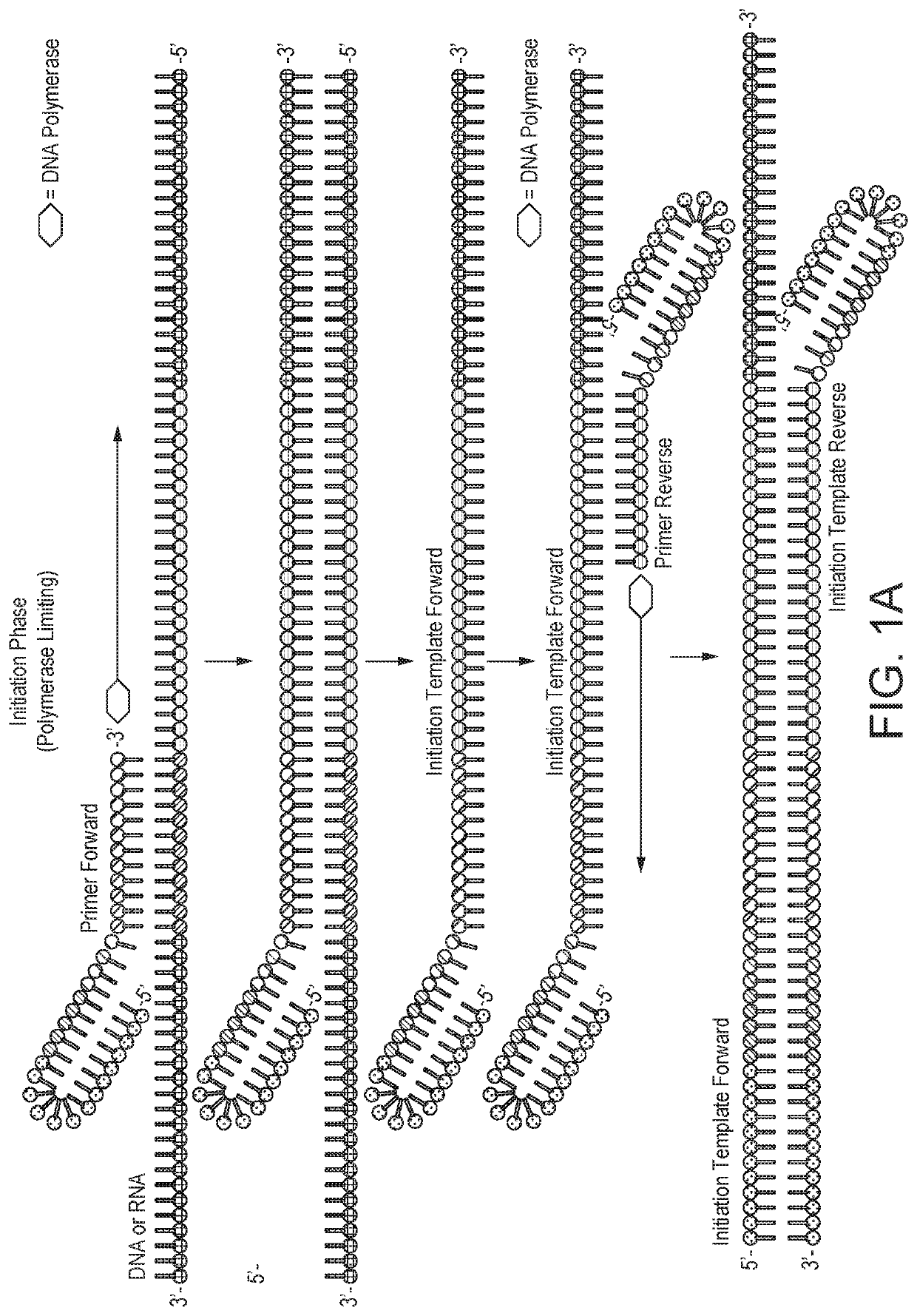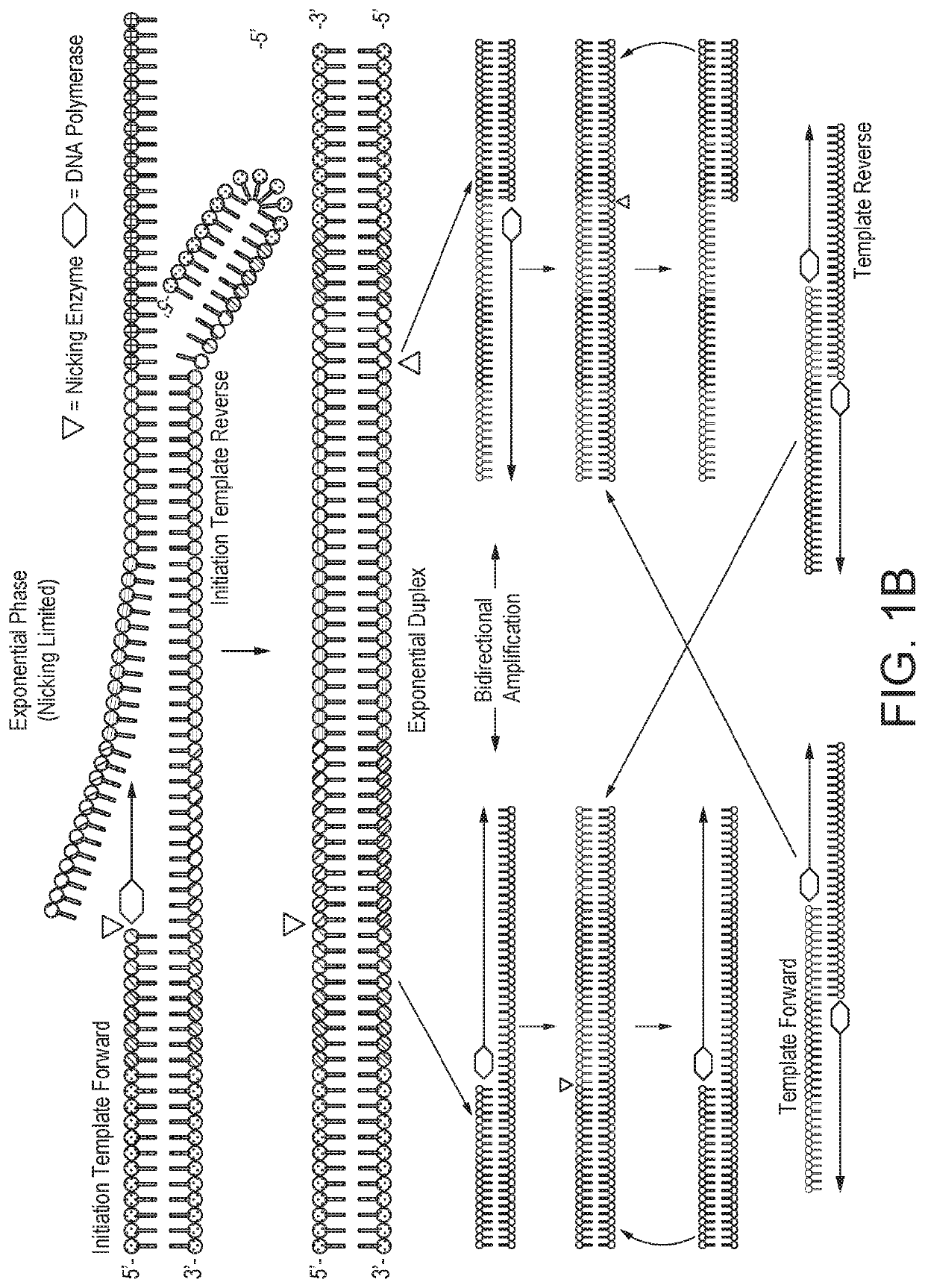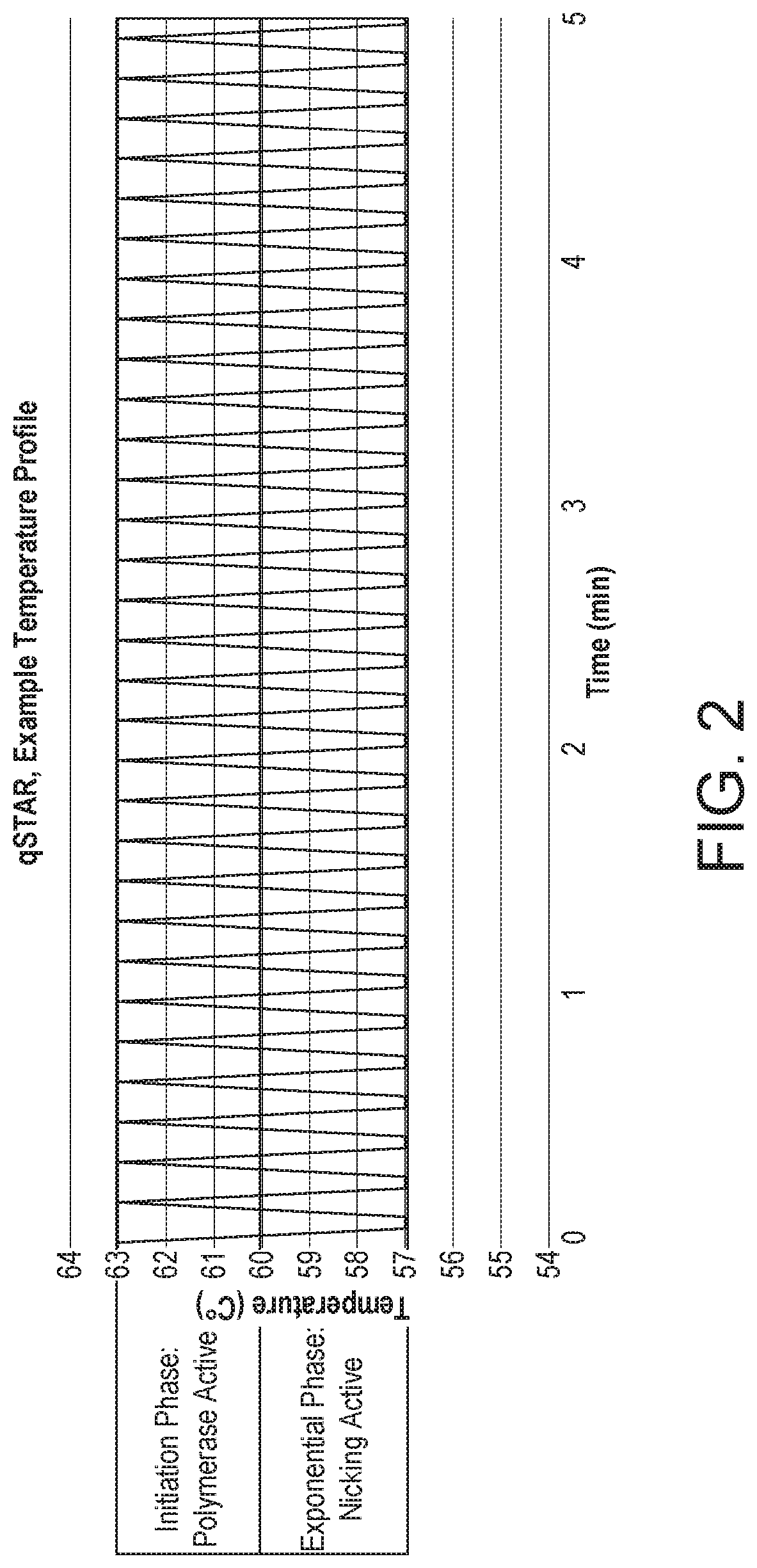Improvements in or relating to amplification of nucleic acids
a nucleic acid and molecule technology, applied in the field of nucleic acid molecule amplification, can solve the problems of not being ideally suited to a poc context, not readily applicable to point-of-care diagnostic tests and the like, and achieve the effects of reducing signal-to-noise ratio, reducing hybridisation temperature, and increasing temperatur
- Summary
- Abstract
- Description
- Claims
- Application Information
AI Technical Summary
Benefits of technology
Problems solved by technology
Method used
Image
Examples
example 1
for Testing Quantitative Selective Temperature Amplification Reaction (qSTAR)
[0123]Quantifying gene expression by Selective Temperature Amplification Reaction (STAR) as described in WO2018 / 002649, or other similarly related DNA / RNA amplification technologies such as PCR, SDA, or an isothermal amplification technique, would be, at best, unreliable. The amount of product produced would reach a plateau that is not directly correlated with the amount of target DNA in the initial starting sample. By establishing a zonal effect of controlled temperature shuttling on an amplification reaction, quantitative amplifications can be achieved with a strand displacement polymerase and nicking endonuclease in which the amplified product is directly related to the initial starting amount of DNA, RNA, or other known nucleic acids. A nicking enzyme-based selective temperature amplification reaction, in accordance with the invention, is referred to herein as quantitative selective Temperature Amplific...
example 2
sing Unmodified Primers
[0140]To demonstrate the potential of this novel amplification technology, qSTAR was carried out using four replicates per target dilution across 6-logs of genomic DNA input, and two replicates for no target controls (NTC). The results of experiments using unmodified primers (i.e. primer molecules not containing any chemically-modified, abnormal nucleic acid bases) are shown in FIG. 4. The amount of signal (background subtracted fluorescence) for the “no-target control” is indicated by the dark line (“ntc”). The amount of signal generated in the presence of 20 cp, 200 cp, 2 k, 20 k, 200 k, and 2M copies of target (genomic DNA of C. trachomatis) is indicated by the respective lines.
[0141]The qSTAR reactions display a linear coefficient of determination from the target input while also demonstrating an improvement in speed, sensitivity, and total fluorescence. It is surprising and unexpected that such an improvement and separation between target inputs could be ...
example 3
sing 2′ O-methyl Modified Primers
[0147]As described in U.S. Pat. Nos. 6,794,142 and 6,130,038, the use of 2′ O-methyl modified primers is known to reduce primer dimer formation during amplification. US 2005-0059003 describes the use of 2′ O-methyl modifications located at the 3′ end of SDA primers, suggesting that Bst DNA Polymerase I and derivatives can efficiently utilize 2′-modified ribonucleotides as primers for DNA synthesis. Target specific primer regions comprising one or more 2′ modified nucleotides (e.g., 2′-O-methyl, 2′-methoxyethoxy, 2′-fluoro, 2′-allyl, 2′-O-[2(methylamino)-2-oxoethyl], 2′-hydroxyl (RNA), 4′-thio, 4′-CH3-O-2′-bridge, 4′-(CH3) 3-O-2′-bridge, 2′-LN A, and 2′-O—(N-methylcarbamate, 2′-Suc-OH)) should improve amplification reactions. The reactions were carried out using the enzyme-selective temperature shuttling (62-57° C.) as described in the preceding example along with a single 2′-O-methylated base or a string of 2′-O-methylated bases located toward the 3′...
PUM
| Property | Measurement | Unit |
|---|---|---|
| temperature | aaaaa | aaaaa |
| temperature | aaaaa | aaaaa |
| temperatures | aaaaa | aaaaa |
Abstract
Description
Claims
Application Information
 Login to View More
Login to View More - R&D
- Intellectual Property
- Life Sciences
- Materials
- Tech Scout
- Unparalleled Data Quality
- Higher Quality Content
- 60% Fewer Hallucinations
Browse by: Latest US Patents, China's latest patents, Technical Efficacy Thesaurus, Application Domain, Technology Topic, Popular Technical Reports.
© 2025 PatSnap. All rights reserved.Legal|Privacy policy|Modern Slavery Act Transparency Statement|Sitemap|About US| Contact US: help@patsnap.com



